
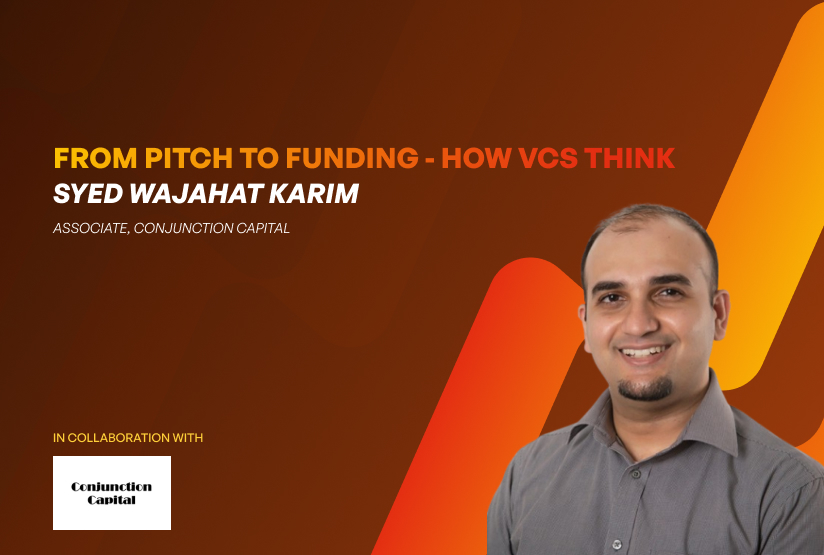
ExitStack Unfiltered w/ Syed Wajahat Karim: From Pitch to Funding - How VCs Think

Newsletter
ExitStack Unfiltered is ExitStack's ongoing webinar series, where we host candid conversations with investors, operators, and ecosystem leaders shaping the startup landscape. Held on a weekly or bi-weekly basis, these sessions are designed to bring real-world insights and tactical advice exclusively to members of the ExitStack Founders Community. The goal is simple: cut through the noise and surface honest, experience-driven perspectives that help early-stage founders navigate the most critical phases of building a company.
Our guest for this session was Syed Wajahat Karim, Associate at Conjunction Capital. Based in Dubai and originally from India, his journey into venture capital was shaped by his own experiences as a founder. In 2017, he launched a transportation startup similar to Shuttle in Bangladesh, where he navigated the challenges of building product-market fit, raising seed funding, and scaling a team, before ultimately shutting down due to the COVID-19 pandemic. Following this, he led growth at a logistics company and has continued to mentor early-stage founders. At Conjunction Capital, Wajahat brings a founder-first perspective, aiming to help entrepreneurs avoid the mistakes he once made and to demystify the fundraising process that often challenges first-time founders.
ExitStack: What is your first piece of advice for founders looking to raise venture capital?
Syed Wajahat Karim: My first piece of advice is to understand how venture capital works. There are many books available, and I highly recommend "Venture Deals" and "Secrets of Sand Hill Road." By grasping the nuances and even the basics of venture capital, you will significantly improve your chances of success and position yourself among the top 10% of founders.
ExitStack: You mentioned that VCs are different. What should founders do before reaching out to a VC firm?
Syed Wajahat Karim: VCs are diverse; how they think and their internal processes can differ greatly. Do your homework before reaching out. Research their investment history by checking platforms like Crunchbase or Pitchbook, or simply using Google to examine their portfolio. Avoid approaching a VC who has already invested in a direct competitor. Additionally, take the time to research the partners and their staff; understanding their backgrounds and previous investments can provide insight into their experience and interests.
ExitStack: How is Conjunction Capital structured, and do you have advice on how founders can increase their chances of getting noticed?
Syed Wajahat Karim: At Conjunction Capital, we are a small team, and I manage everything from sourcing to evaluation. However, VC firms can often have hierarchical structures. If you are looking for quick results, my advice is to try to connect directly with a partner at the VC. You can do this through direct outreach or by attending events. Speaking to a partner gives you an advantage because, even if they refer you to junior staff, their top-down instruction increases the likelihood that your proposal will be reviewed, as opposed to a cold outreach. Warm leads, typically referrals from other VCs or founders of portfolio companies, are prioritized. Good founders know other good founders, and good investors know good founders. Referrals are one of the fastest ways to get to the top of the pipeline. While cold outreach can be effective, warm introductions significantly maximize your chances.
ExitStack: The list of startups VCs evaluate is dynamic. How can founders maximize their chances of staying at the top of the list?
Syed Wajahat Karim: My list of startups is dynamic and often changes based on urgency. Rounds that are moving quickly, or updates about significant interest or the closing of portions of a funding round, jump to the top. My advice is to build momentum. Optimize for speed when closing initial investments, even if they are smaller amounts from Angels, as this creates urgency and induces FOMO (Fear Of Missing Out). When a top-tier VC steps in, other VCs tend to notice and prioritize your startup. While Conjunction Capital is somewhat resistant to FOMO, I believe that most VCs are influenced by it. Treat fundraising like a sales activity: categorize investors into top-tier, mid-tier, and safety, and strategically balance your targeting approach.
ExitStack: How Do VCs Typically Screen Pitch Decks?
Syed Wajahat Karim: When a pitch deck is submitted, VCs, particularly the initial gatekeepers such as analysts or associates, conduct a quick screening. They usually spend only about a minute on each pitch deck. This may seem surprising given the significant effort founders put in, but VCs engage in a mental exercise to quickly qualify or disqualify the startup. A crucial point for founders to understand is that VCs do not look for reasons to say no; rather, they look for reasons to say yes. It's important for founders to think about what elements will capture a VC's interest.
ExitStack: What are some immediate disqualifiers you look for when reviewing the Problem and Solution slides?
Syed Wajahat Karim: When evaluating the Problem slide, I assess whether the problem is realistic or meaningful. For instance, consider a startup solving shoe-tying with robotics. While a great solution may exist, is the underlying problem significant enough? Is the problem also solvable within the startup's scope? If the problem doesn't seem meaningful or solvable, it can be an immediate disqualifier.
For the Solution side, a common mistake is a problem-solution mismatch. The solution must accurately target and solve the stated problem. I always ask founders, "Does it solve the problem?" Many pitches present a solution without providing evidence that it resolves the claimed issue or quantifying the impact (e.g., hours saved). This oversight is surprising but happens frequently and waters down interest. An unrealistic solution, especially for deep tech that seems hard to execute, can also make me lose interest.
ExitStack: What makes a team stand out positively or negatively?
Syed Wajahat Karim: A major disqualifier on the Team slide is a lack of founder-market fit. For example, an AI startup team without deep AI experience raises concerns about their ability to build a strong product. Founders need to articulate their unique experience or insight that positions them as the best team to tackle the problem at hand. VCs consider if this is the best team for this specific problem and market, as backing the wrong team can mean missing out on the opportunity to invest in more qualified competitors later on. Also, it's important to note that VCs talk to each other; there's backchanneling. If a founder has a bad image or red flags, it's an instant disqualifier. Transparency and honesty are key. Never share something with one VC you wouldn't want others to know, as inconsistencies can lead to distrust. Managing your reputation is important for both founders and VCs.
ExitStack: Are there specific red flags you look for in the Business Model section, particularly in emerging markets?
Syed Wajahat Karim: In emerging markets, I haven't seen many strong red flags in the business model. Negative gross margins are rare here, and I don't think the market has an appetite for them. Personally, I don't think negative gross margins are always bad if there's a strong growth plan, but few emerging market VCs have that appetite. Generally, the business model section is fairly straightforward.
ExitStack: How important is the Go-to-Market slide, and what do you look for in it?
Syed Wajahat Karim: The Go-to-Market slide is very important as well as underrated. For early-stage founders, it's arguably more important than the product or competition slides. It shows how quickly and affordably you can grow the business and capture the market. While founders usually hide high CACs or low LTVs, these often come up in later discussions. Few founders demonstrate insight into acquiring customers quickly and affordably. While digital marketing or outbound sales are common, I love to see early-stage startups that have uncovered a unique go-to-market channel providing decent volume at a low cost. Showing you've thought about customer acquisition demonstrates maturity. It's one of the top slides.
ExitStack: What is your perspective on the Market Size slide, and what are some common mistakes?
Syed Wajahat Karim: The market size slide is interesting and divides VCs. Some see it as guesswork, while others find it important. Personally, I fall somewhere in between. A mistake founders make is inflating the market size because they think VCs want to see big numbers, like claiming anyone who eats food is the market for potato chips.
You need to be realistic about who you can reach and who your actual customers are. I prefer a bottom-up approach over a top-down one. Instead of quoting large industry reports, build the market size from the ground up based on the number of potential customers you can reach and what they'd pay. This demonstrates deep thought.
ExitStack: Does the bottom-up market sizing approach help in developing the go-to-market plan?
Syed Wajahat Karim: Yes, exactly. It shows how well you've thought about your target customer personas and their numbers. It's very closely linked to the go-to-market slide. While startups are dynamic and market sizes change, the effort put into clearly thinking about these ingredients shows the quality of the founder. We understand execution can be messy and doesn't always match the plan, but the thought process behind it matters.
ExitStack: Traction is often a key metric for VCs. How important is it for Conjunction Capital, and what kind of traction are you looking for?
Syed Wajahat Karim: Traction is extremely important. Approximately half of the startups I pass on are because of this. We view growth as one of the highest value indicators of success. Even early-stage VCs, like in the UAE, often ask for traction at the pre-seed stage, which I find amusing.
Good traction typically means double-digit month-on-month (9-10%+), 30%+ quarter-on-quarter, or 3x annualized growth. These figures capture my interest and are easier to sell internally. However, it's not just about the number; the quality and sustainability of growth matter. Be wary of gaming the numbers over a very short period. Traction also isn’t limited to revenue; it can be demonstrated through waitlists, pipeline growth, retention numbers, or other relevant metrics. Think creatively but honestly about showcasing your business's growth potential.
ExitStack: What about the Competition slide? How should founders approach differentiating themselves?
Syed Wajahat Karim: The Competition slide is probably the second biggest reason startups get disqualified. Many founders show competitors but lack a well-thought-out differentiator. In a crowded market, you need a clear explanation of how you will win. This is where your moat, barriers to entry, and competitive advantages come into play. Very few founders can articulate this effectively. Avoid relying solely on generic 2x2 grids where you position yourself in the top right; the differentiation must be relevant and honest.
ExitStack: Fundraising expectations, particularly valuations, can be tricky. What's your advice for founders on approaching valuation?
Syed Wajahat Karim: An unrealistic valuation can be a significant turnoff on the fundraising slide. For instance, a pre-seed startup asking for a $40 million valuation is likely not for us. It’s also crucial to target the right stage investor (e.g., a Series B startup shouldn't target a seed investor). Valuation should not be treated as a fixed number; it's flexible and primarily a function of supply and demand.
The simplest way to start setting your valuation is by examining comparables—average pre-seed or seed valuations in your industry in your specific market (not the US or Europe).
Here’s a step-by-step approach:
1) Determine how much money you need (e.g., for 18-24 months of runway).
2) Decide how much equity you are willing to dilute. A typical range for pre-seed is usually 10-15%, but can go up to 25%. It’s best not to exceed 25-30%.
For instance, if you need $1Mn and are willing to give up to 10% equity, your post-money valuation would be $10Mn. If you're willing to give up 25%, that would bring your valuation down to $4Mn. Don't prematurely offer VCs discounts on valuation if they aren't already interested; it doesn't help your case. If there's conviction in the business, VCs will invest even at higher valuations. Ideally, you want to reach a point where VCs are more eager to invest, not the other way around.
ExitStack: What are some other reasons a VC might pass on a pitch deck?
Syed Wajahat Karim: One common reason is that after reviewing the entire deck, I still don't understand what the startup does. Confusion can lead to missed opportunities, especially when there's a large pipeline. The founder needs to be able to tell a story properly.
ExitStack: There are challenges for Bangladeshi startups because the ecosystem is less mature, and there’s pressure to become self-sustainable, which can conflict with the high growth that VCs often seek. How can a Bangladeshi startup navigate this while attracting international funding?
Syed Wajahat Karim: That's a very good and complex question. There's definitely a trade-off between growth and self-sustainability. Bangladeshi founders are incredibly capital efficient—the dollar stretches quite far there. You need to decide if you're building a good business or a very fast-growing one. Most businesses, aside from a few that require blitzscaling, should aim to be self-sustaining first. Sacrifice growth initially to become the master of your own fate and alleviate fundraising pressure. Once self-sustaining, you can tell a rational story.
While traction is important, highlight other strengths. Explain why your growth hasn't been 3x; perhaps you're capital-constrained. If you have data proving that with capital (e.g., knowing your acquisition cost and LTV), you could grow 3x, articulate that story. This is where skill comes into play. Show that you are building a very good business constrained by capital, and a smart investor will see it as an opportunity to step in. This differentiates good VCs from average ones. So, focus on self-sustainability first, then explain how funding unlocks scale.
ExitStack: How can founders manage their cap tables early on to avoid significant losses, even in a large exit? What advice do you have for organizing cap tables and managing dilution?
Syed Wajahat Karim: The simplest answer is to manage the dilution you accept at each fundraising stage. For the first round, set a hard limit on how much you will dilute. A poorly managed cap table may either result in a crowded cap table with too little left for founders (making VCs back out) or having equity but with unfavorable terms (like liquidation preferences that give VCs disproportionate returns in an exit). These terms can be technical, so reading books like Venture Deals and Secrets of Sand Hill Road is essential for founders to understand VC terms and avoid these mistakes. Be cautious about unnecessary dilution, particularly in the early stages. For example, avoid giving away 60% of your cap table to an angel investor. It’s also wise to involve a competent, affordable lawyer who can help steer clear of strange governance or financial terms.
ExitStack: After a VC expresses interest following the initial deck screening, what happens next, and how should founders approach meetings?
Syed Wajahat Karim: Typically, the next step involves a meeting. This is where the founder's ability to sell and tell a good story shines. Practice conveying your story clearly; simplify it and avoid technical jargon. Don't assume the VC knows your business better than you do. Generalist VCs have broad but shallow knowledge, "a mile wide and an inch deep." You need to guide the VC.
Clearly communicate the four key ingredients: it's a big opportunity, you are the best person to solve it, solving it will generate outsized returns, and both of you will benefit from it. Build rapport and connection; remember that it's a two-way street. Founders need to be confident. Don't act overly grateful or subservient because you are also doing the VC a favor by building a good business. Convince yourself you are building a world-class business. Take hold of the conversation; don't let the VC take the reins alone. If a VC seems to know more about your business than you do, that’s a red flag. On the other hand, if a VC says something incorrect or has a misconception, correct them and provide proof. Think of it as giving the VC a guided tour of your business. While capital scarcity might shift the perceived balance of power, remember that true power should lie with the founders.
ExitStack: After the meeting, how does the deep evaluation process work at Conjunction Capital?
Syed Wajahat Karim: We start digging deep into each component of the business, collecting extensive information. I'm particularly interested in outlier metrics like strange, positive data points that make you think, "Huh, this is interesting." An exceptionally high net dollar retention of 170% compared to an average of 100-110% is a good example. I focus on these anomalies rather than averages. If your CAC to LTV ratio is 1:70, that's compelling and I maintain a list of these noteworthy metrics.
The next step is to stress-test these data points to see if they hold up. For instance, high traction might turn out to be a result of deep discounting, making that point fall apart. I'm looking for heavy data points that persisr after stress-testing. Then, I compare these strengths against what could happen if everything goes right—how big can this bet become? Does the startup have the potential to become a unicorn? It's like a weighing machine, balancing positive heavy points against negative heavy points.
Negative points, like a messy cap table, are also stress-tested to determine if they can be remedied. Some factors carry more weight than others. For example, an exceptionally strong founder might outweigh other issues. Unlike a weighted scoring system, this allows a single outstanding factor (like the founder or traction) to justify the investment decision. Founders should try to identify what about their business is truly exceptional; what makes it strange or different. This is how we look at startups at Conjunction Capital.
ExitStack: You invest in frontier markets, including Bangladesh. What trends or traits excite you about emerging markets, and specifically about Bangladeshi founders compared to others? What sectors in Bangladesh are particularly exciting Conjunction Capital?
Syed Wajahat Karim: In terms of how Bangladeshi founders compare, my advice is to focus on your own business rather than comparing yourself to founders in other markets. Each founder and business is unique. Build a good business, and VCs will chase you. While this is easy to say, executing it can be challenging.
Regarding sectors in Bangladesh that excite Conjunction Capital and me, besides edtech (where we invested in 10 Minute School), I find the garment space appealing due to its significance in the economy and the potential for outsized opportunities. Agritech is also intriguing because it's a huge, largely undigitized market with many inefficiencies to address. Fintech is also exciting. Although bKash has solved a major part of the market, there's still plenty to explore in this sector and generally across all emerging markets. Health tech and logistics are tough, but meaningful solutions are interesting and relevant. Personally, I would rank the garment sector and agritech as the most exciting for me in Bangladesh.
ExitStack: As we wrap up, do you have any final key pieces of advice for founders on fundraising?
Syed Wajahat Karim: To conclude, I have two or three key points.
First, always follow-up. Your startup can easily get buried in the pipeline. Don't hesitate to follow up frequently as it helps ensure that your application remains visible. Ghosting is common in this business, sometimes because VCs find it hard to articulate why a startup isn't ready. As a founder, you need a quick feedback; a yes or, more importantly, a quick no so you can move forward and keep them updated. Following up ensures you don't get forgotten.
Second, focus on networking. Connect with VCs within and outside Bangladesh, especially those looking at emerging markets or who have invested in Bangladesh. Utilize LinkedIn, cold outreach, and attend events. Think long term. Fundraising is akin to a marriage; it involves getting to know each other over time. If a VC says no, try to understand why. If their reasons don't make sense for your business, that's okay. Keep them in your investor updates. The momentum you build will eventually capture interest.




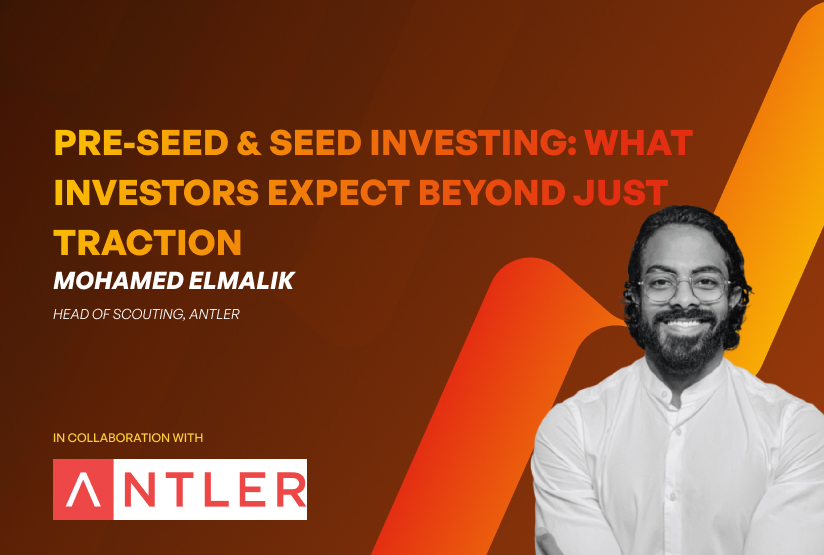
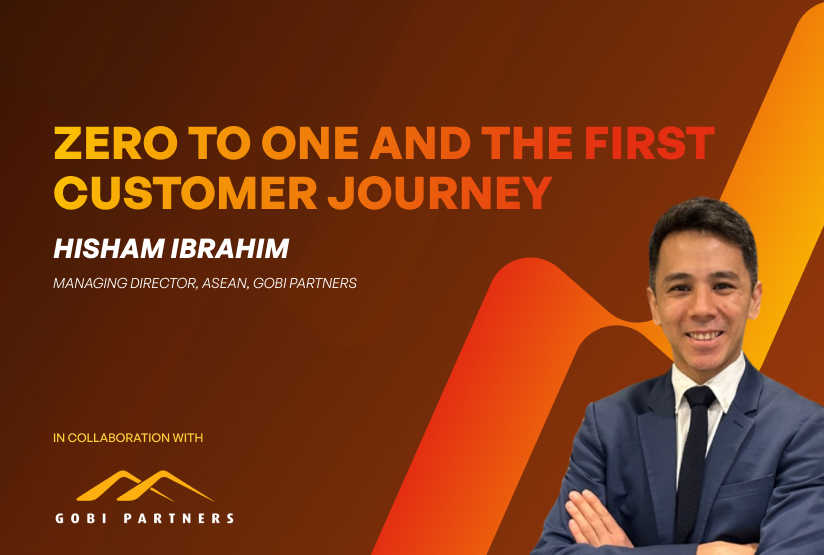



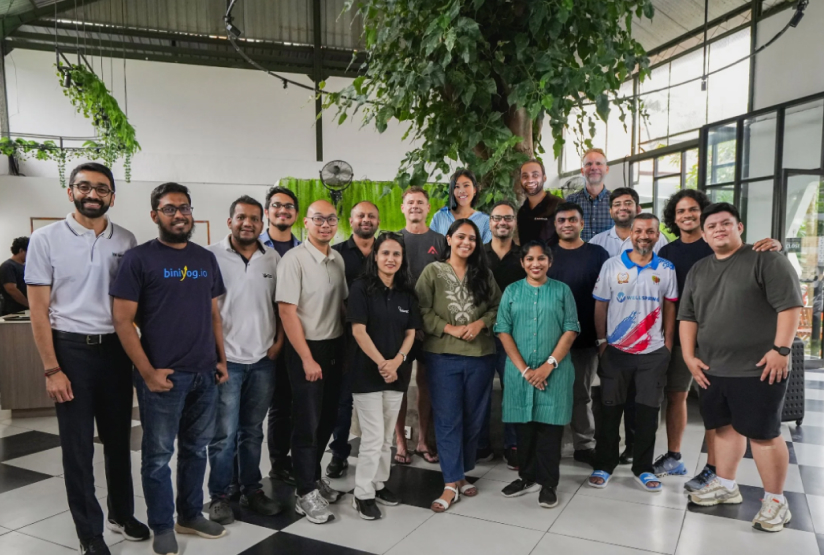



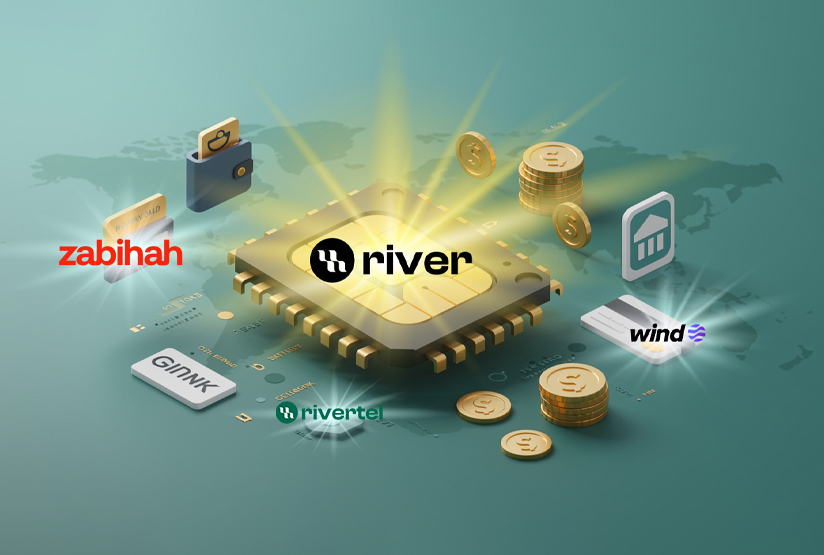






.jpg)
.jpg)





.jpeg)



.jpg)


















.jpg)


.jpg)
.jpg)

.jpg)
.jpg)


















.jpeg)












..jpg)
..jpg)



.jpg)






